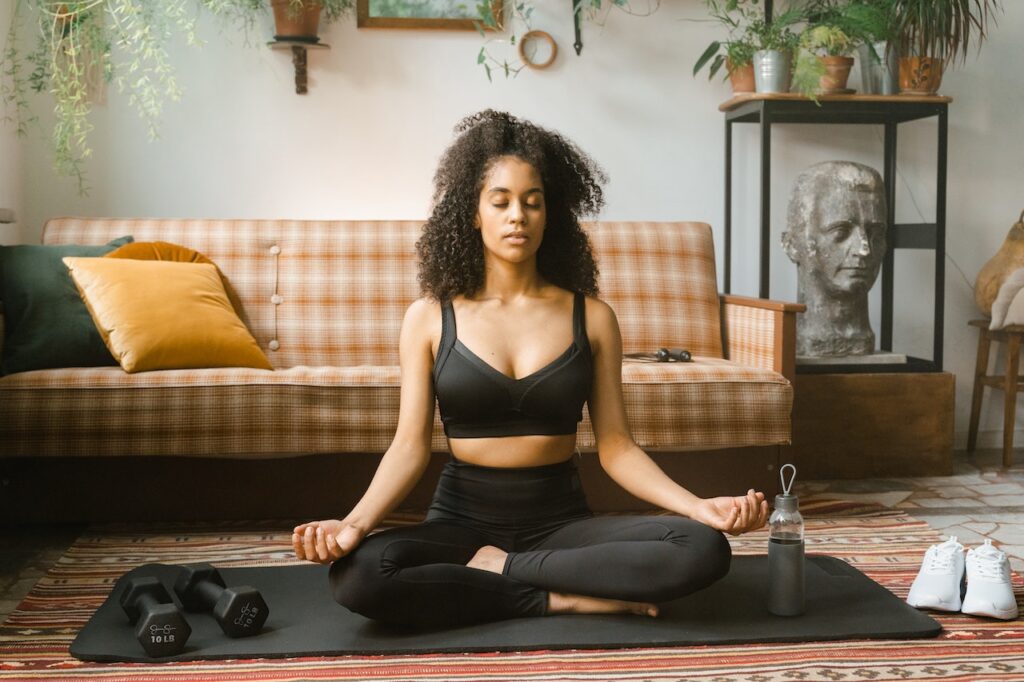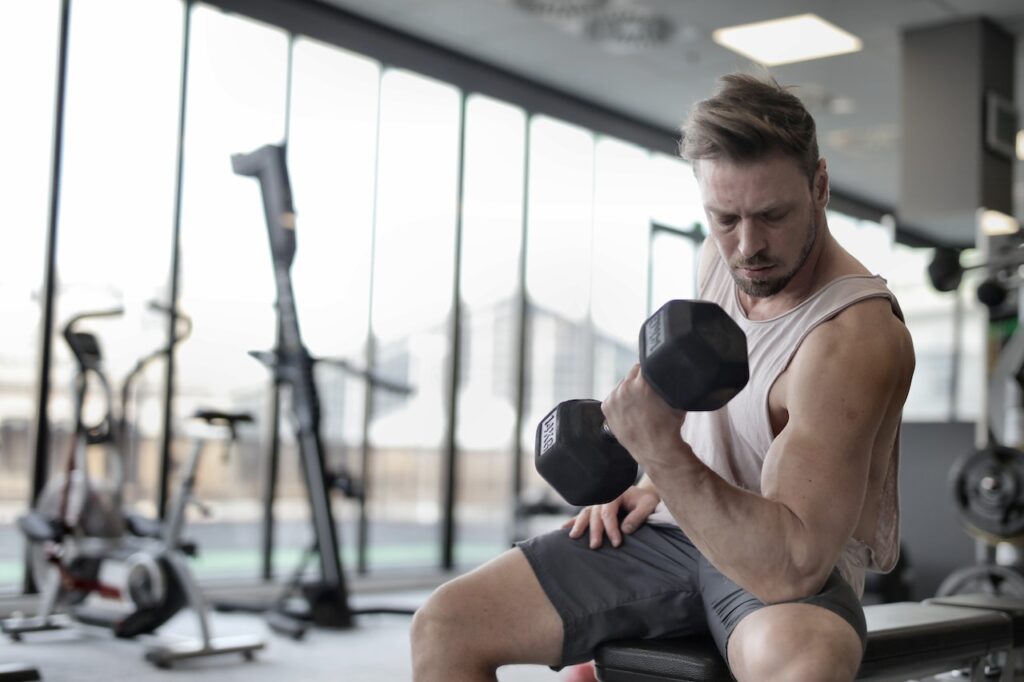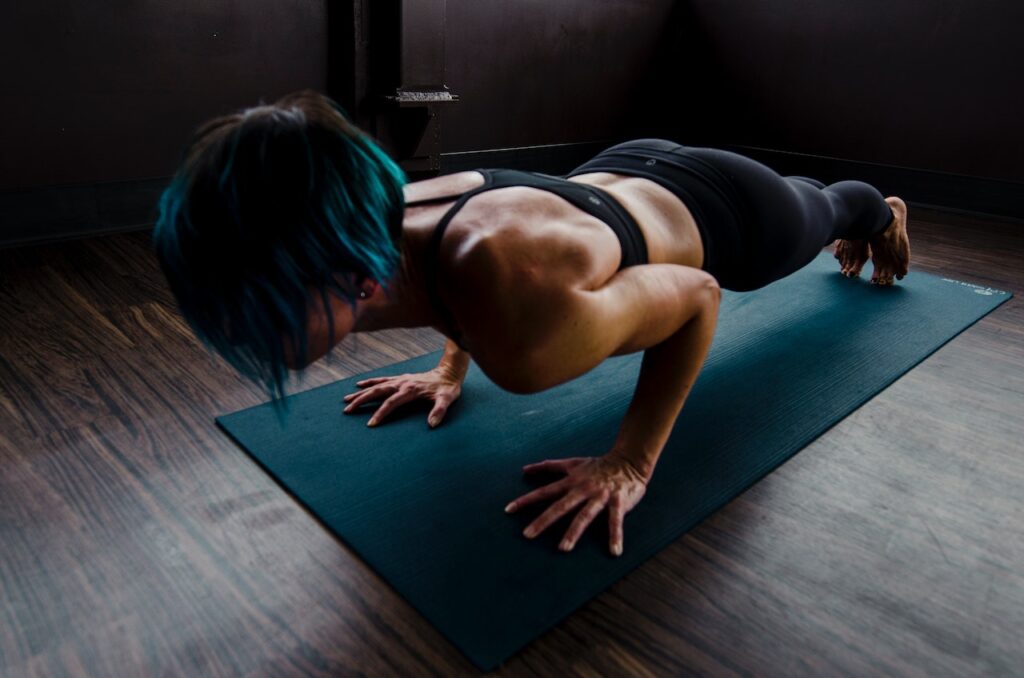Assessing Your Space
The first step to designing your home gym is assessing the space you have at your disposal. Whether you’re converting an entire room or carving out a corner in your living room, the size of your space will significantly impact your gym’s design.
For compact spaces, think vertical. Utilize wall space for storage or install a wall-mounted pull-up bar. For larger rooms, the possibilities expand. You could designate different areas for cardio and strength training, or even incorporate a stretching zone.
Remember, the goal is to create a gym that fits seamlessly into your living space. Don’t be discouraged by space constraints. With creativity and careful planning, any space can transform into an effective workout area.
Read our article to choose the right home gym equipment for your needs.

Selecting Your Home Gym Equipment
Once you’ve assessed your space, it’s time to decide on the equipment. Your equipment choice should reflect your fitness goals, available space, and budget.
Common home gym equipment includes cardio machines like treadmills or stationary bikes, weightlifting equipment such as dumbbells and barbells, and versatile gear like resistance bands. However, don’t feel compelled to cram in every piece of equipment you’d find at a commercial gym. Focus on essentials that align with your fitness goals and fit comfortably in your space.
Remember, it’s always better to have a few pieces of equipment you use regularly than numerous ones gathering dust. Consider multifunctional or compact equipment if you’re working with a smaller space.
Layout Planning: Positioning Your Equipment
With your equipment selected, it’s time to plan your gym layout. Proper positioning of your equipment can optimize space utilization, enhance workout efficiency, and ensure safety.
For optimal layout, consider creating zones for different workout categories. For example, one area of the room can be dedicated to cardio exercises featuring your treadmill or stationary bike, another area for strength training with your weightlifting equipment, and perhaps a quiet corner for stretching or yoga.
Always ensure there’s enough room around each piece of equipment for safe usage. For instance, if you have a barbell, there should be ample space for you to move around with it. Similarly, if you have a treadmill, make sure there’s enough space at the back in case you need to step off quickly.
By giving careful thought to each of these steps, you can create a home gym layout that is inviting, efficient, and tailored to your fitness journey.
Ready to create your dream home gym? Get started with our comprehensive guide.

Storage Solutions for Your Equipment
Having a designated place for each piece of equipment not only keeps your workout area tidy but also extends the life of your equipment. Efficient storage solutions can especially be a game-changer in compact home gyms.
Wall-mounted storage units, weight racks, and shelving systems can house your dumbbells, resistance bands, and other equipment. Small items like jump ropes and yoga blocks can find a home in stylish baskets or bins. For items like stability balls that can’t be stored away easily, consider dual-purpose furniture like an ottoman.
Remember, the key is to make your storage as accessible as possible. You’re more likely to use your equipment if it’s easy to reach.
Limited space? Check out our clever space-saving ideas for your home gym.

Enhancing Your Workout Environment
While the equipment and layout form the functional backbone of your home gym, never underestimate the power of a motivational environment.
Incorporating elements that inspire you can significantly impact your workout motivation. A mirror can make your space seem larger and helps monitor your exercise form and technique. Posters with motivational quotes or images, or a vision board displaying your fitness goals can also provide an extra boost during a challenging workout.
The lighting in your home gym also plays a critical role. Natural light can invigorate your morning workouts, while softer lighting can help with evening cool-downs. If natural light isn’t available, opt for bright, cool-toned lights to keep the energy levels high.
Safety Considerations in Your Home Gym Design
While planning your home gym layout, safety should be a top priority. Ensure there’s enough space around your equipment to prevent injuries during workouts. Rubber flooring can cushion falls and reduce noise, while a first-aid kit should be within reach in case of an emergency.
Electrical safety is another crucial factor. If you’re using machines that require power, ensure cables are organized and kept out of the way to prevent tripping hazards. Lastly, if you have children, consider safety measures to keep them away from heavy equipment.

Conclusion
Designing your home gym layout doesn’t need to be daunting. By assessing your space, selecting the right equipment, planning your layout, optimizing storage, creating a motivational environment, and prioritizing safety, you can transform any space into a fitness haven.
It’s time to put these tips into action and take a step towards a healthier and more convenient lifestyle. Begin the exciting journey of designing your very own home gym today. You’ll be reaping the benefits of your customized workout space before you know it.
